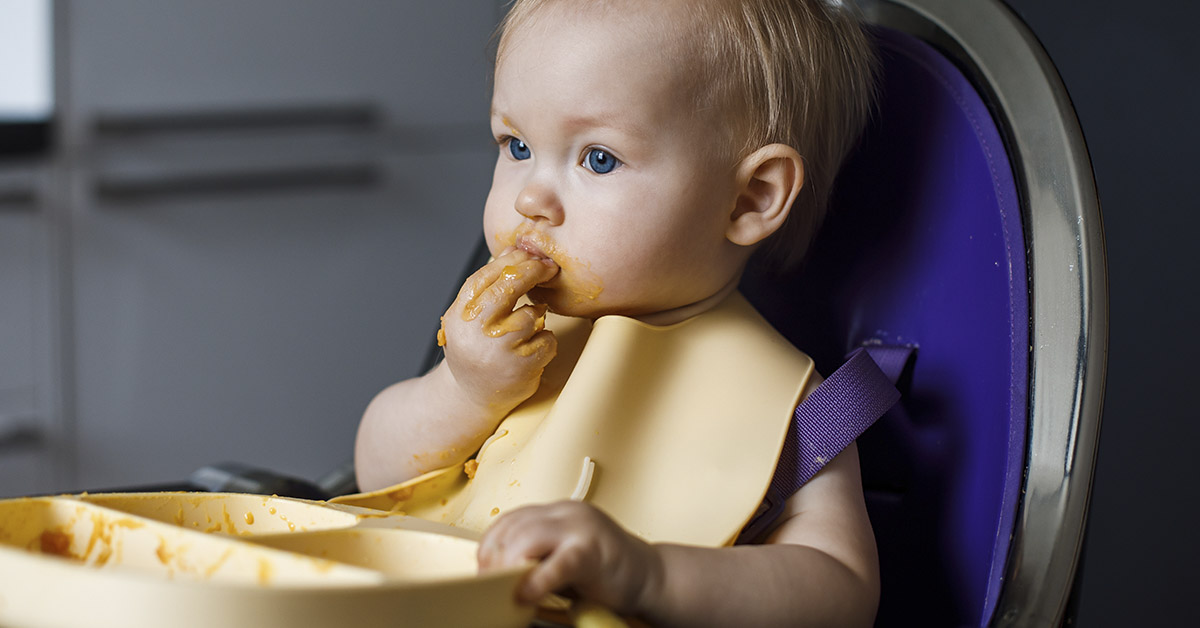Although parents want the best for their kids, it can be difficult to always know the safest choices to make. Luckily, there are women like Ashley Stewart. Women who use social media platforms as a means of sharing personal parenting experiences. In a recent video, Stewart shared a problem she noticed with her child’s silicone plate. A problem that came to light when he suddenly began refusing to eat.
Sharing Wisdom
Ashley Stewart is the mom of a toddler and shares her meal ideas on her Instagram account. The page, with more the 300,000 followers, is full of healthy meal ideas designed for toddlers. Her page also features a section devoted to care regarding a silicone plate, her preferred dish for her little one.

Issuing a Silicone Plate Warning
She noticed that her little guy was struggling to eat when he suddenly “started eating horribly” or “stopped eating” altogether. The concerned mom didn’t know what to do. “He would take a few bites and then not want anymore. I tried everything, but he wouldn’t eat!!” She explained.
Unfortunately, it took her a few weeks to finally realize the problem had been with the toddler’s silicone plate. “Then one day I took a bite of the leftover food off his plate, and I had to spit it out,” she said. “It tasted SO BADLY of soap. No wonder he wasn’t eating.”
Needless to say, she switched plates and didn’t have any other problems. However, she still wondered if there was something she could do to help other parents become aware of the problem and if other parents had also experienced something like this.
One parent commented that they had, just the day before. Disclosing that changing out the silicone plate helped her daughter to eat “everything” on her plate.
Another parent shared, “I got these wonderful ceramic plates off Amazon that have a removable silicone grip around it (to help protect it from breaking)! Love that it doesn’t leave any aftertaste and it hasn’t been an issue at all with throwing or breaking! (I just keep my eye out ha-ha).”
Meanwhile, one parent explained that getting stainless steel dishes for their kids was the “Best decision I ever made.”
Read: The Benefits of Ceramic Cookware
Proper Handling of Silicone Plates
Lastly, another parent disclosed they “use an all-natural soap“, noting their family hadn’t had any problems. Interestingly, this aligns with Stewart’s own recommendations for handling dishes like a silicone plate. Her recommendations include using “mild or unscented dish soap” and not “soaking in soapy water.” Furthermore, she shares that dishes like a silicone plate should only be washed on the top rack of a dishwasher.
Stewart also discloses that any parent whose child uses a silicone plate, bowl, or cup should “bake silicone plates in the oven at 250 F for one hour to remove soap buildup”.
Frustratingly, there’s a plethora of information, some contradictory, regarding the safest household items. For example, Tupperware and Non-stick pans once revolutionary in the culinary world. However, we now know that the chemicals found in both products have been linked to cancer and other autoimmune disorders. Unfortunately, the same can be true of silicone. However, according to the FDA, liquid silicone is more concerning than silicone in its solid form. Therefore, skin creams or leaking breast implants are of higher concern regarding household safety. Additionally, the FDA approved using silicone plates and other cookware, provided they are used appropriately.
Firstly, any melted, misshapen, or burnt silicone dishes should be discarded. The same is true for other types of cookware like plastic or wood. Secondly, while they are fairly heat tolerant, silicone plates and other dishes should never be exposed to high temperatures, around 400 degrees and up. In contrast, one study found that if heated to temperatures no higher than 350 degrees “indefinitely,” there was almost no change found in silicone’s properties.
And as aforementioned, silicone dishes should never be put in the bottom rack of a dishwasher and should be cleaned with mild and or natural soaps.
Science Behind a Silicone plate
Although several options exist regarding the materials that dishes can be made of, it’s helpful to know not just their effects on the body, but also how they’re made or what they’re made of. A combination of both oxygen molecules and silicon molecules, silicone has been used for a variety of purposes. Because silicone has “high binding energy,” it’s more chemically stable and, therefore, more heat resistant than other “common organic polymers“. It’s also incredibly cold resistant as well, as reflected in the previously mentioned study, and can also remain intact at temperatures as low as -80 degrees Fahrenheit.
One mom with a large following had the opportunity to bring to light a situation that may have impacted thousands of kids. Yet, no one has spoken about it. Although, in this case, the outcome was relatively harmless, it’s a good reminder that it truly does “take a village.” Moreover, communication can help provide a more rounded perspective on parenting. Thanks to Ashley Stewart’s now-viral post, more parents are becoming aware of how to approach care and use of silicone plates and other dishes.
Keep Reading: The Cleaning Hack To Remove Yellow Stains From Pillows That Costs Just 5 Cents
Sources
- “Silicone.” Britannica
- “Mum issues silicone plate warning after toddler son stopped eating for weeks.” Tyla. Poppy Bilderbeck. July 4, 2023.
- “Is silicone toxic?” Healthline. Erica Cirino. August 27, 2019.
- “Effects of heating rate on the structure and properties of SiOC ceramic foams derived from silicone resin. Science Direct. Hao Tian and Qing-song Ma. April 2012.

